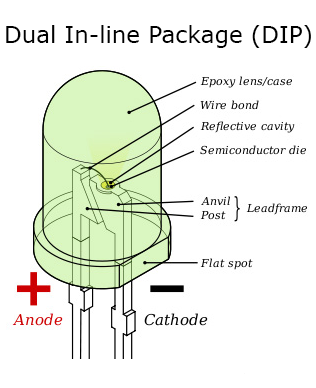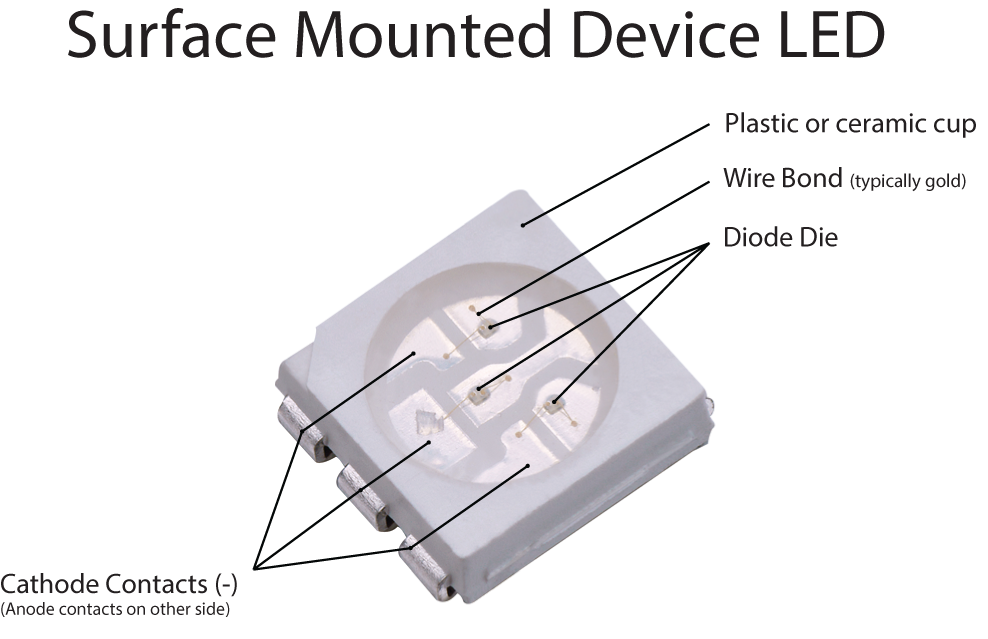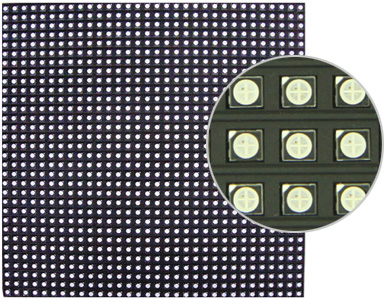 |  | |
DIP LEDs contain two connecting pins which are mounted through-hole to PCBs (printed circuit boards). DIP LEDs have higher optical decay, lower CRI, and lower efficiency than the more recent SMD LEDs. However, many DIPs are used in larger pixel pitch outdoor LED screens to achieve higher brightness.
 |  |
SMD LEDs are the more recent, resilient, efficient, and long-lasting technology for mass production. SMD parts can be made smaller and thinner because the part is only soldered to the “surface” of one side of the circuit board. SMD screens usually use 3-in-1 LEDs. With one RGB 3-in1 LED unit per pixel, there are three tiny LED chips sealed inside a single part. Therefore, the color blends better, and the image is sharper.
 |  |
Newer COB technology presents many advantages: wide viewing angle, solid dustproof, shockproof, and often waterproof surface which is rigid and prevents damage to LED elements. Flat and even face minimizes moire effect. There are a few manufacturers who are experimenting with this upcoming technology and some products are already available for purchase. Unfortunately, there are also challenges associated with COB LED video screens that are yet to be resolved.
 |
Black SMDs are the same as White SMDs but with a tanned front to mask reflective surface, which results in a darker screen, thus, deeper black levels and a much higher contrast ratio. Typically black SMDs are more expensive and less bright but very effective in concerts and outdoor applications, especially under direct sunlight.
OLED
Organic Light-Emitting Diode
LED
Light-Emitting Diode
LCD
Liquid Crystal Display
QLED
Quantum Dot LED or to be precise, Quantum Dot LCD TV with LED backlight
DLP
Digital Light Processing (device)
Plasma
Gas-charged plasma display technology
CRT
Cathode Ray Tube
Pixel
Pixel is the smallest controllable element of a screen and can also be referred to as a dot. In DIP screens, three or more LED elements (Red Green Blue) construct one pixel.
Pixel pitch
Pixel pitch is a distance between the center of a pixel to the center of the nearest pixel, usually measured in millimeters, even in the USA.
Lumen (lm)
The Lumen is the standard unit of measurement for luminous flux, the amount of visible light emitted by a source in every direction. Luminous Flux takes into account the human eye’s relative sensitivity to different wavelengths of light. Lumens do not take into account distance or spread.
Lux (lx)
1 Lux = 1 Lumen per square meter.
Lux is the measurement of Luminous Flux spread out over a unit area, so measuring the Lux at a given distance helps one discern how much the light spreads out from the source, and how this affects coverage.
Candela (cd)
Candela is a unit of measurement of light output in a given direction. Candlepower (abbreviated as cp) is an absolute unit expressing luminous intensity, equal to 0.981 candelas. This measurement is based on the light output from a mathematically precise specific model of a candle.
Nit (nit)
A measurement of Luminance in one direction, the standard unit of measurement to describe the brightness of a screen. 1 nit = 1 cd/m^2. 1 Nit is equal to 1 candela per square meter.
CCT - Correlated Color Temperature (Kelvin)
This represents a measure by Kelvin scale of pure white color light and correlates to flame temperature, which generally appears less orange and bluer when temperature increases.






